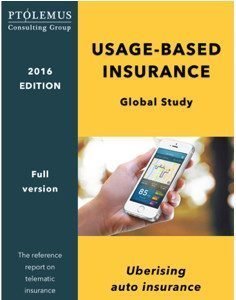Telematics insurance in the UK: where is the growth gone?
When we forecast the growth of the Usage-based Insurance (UBI) market in 2013, we were bound to get some things wrong, but we did not expect it would be the UK. Instead of the 163% expected from 2013 to 2015, the market only grew by 15%.
In fact we observed that since 2012, at least 13 UBI programmes have come and gone in the UK alone. And this is not counting the (more than 10) programmes that are officially “on” but with very low volumes. We very recently published some numbers and you can download our new Infographic here.
So is it the end of the hype for the UK telematics insurance market or is the industry simply maturing and getting ready for transformation?
The UK market is very much unique in its approach; 46% of the programmes are dedicated to young drivers and these programmes represent no less than 70% of the active subscriptions today. The slow growth seems easy to explain: the UK UBI market is stuck in an overcrowded niche with limited amount of room to innovate.
Churn is also affecting the market negatively; the capacity for insurers to keep young drivers renewing can be as low as 20%. For UBI the equation becomes more complicated, as they have an incentive to stay if they are good drivers and get the renewal discount. If they are simply average, the discount might not be appealing enough – and price comparison web sites make it so easy to switch.
 Maybe the model is the real problem. The young drivers of today will most probably not become UBI customers in the future. Consumer Intelligence performed a survey that showed black box insurance is now seen as a product “young drivers have to go through and will eventually be able to graduate from”. Tempting older drivers with a UBI proposition in the future will therefore become even harder.
Maybe the model is the real problem. The young drivers of today will most probably not become UBI customers in the future. Consumer Intelligence performed a survey that showed black box insurance is now seen as a product “young drivers have to go through and will eventually be able to graduate from”. Tempting older drivers with a UBI proposition in the future will therefore become even harder.
So, how can car insurers launch an appealing UBI proposition for low risk drivers and give away enough to make it attractive while staying profitable (or loosing less)?
There are signs of important changes ahead. In fact, significant research work has gone unnoticed and is just now showing its fruits with trials and new offering being launched recently and in the coming months including:
- New device trials and propositions: two insurers including the largest one, Direct Line, are now successfully using OBD dongles and we have seen a number of trials using the cigarette lighter as a low-end sensor box tethered to the smartphone.
- New services: DLG recently launched a telematics offer with its roadside assistance brand Greenflag
- New offering: Carrot’s forthcoming “older young driver” proposition based on smartphone will tackle the very problem mentioned earlier.
Carrot is also working with Fiat to co-promote a UBI proposition for young drivers buying a new car that include a PCP (personal contract hire) agreement of £239 a month for three years with a 6000 mile annual limit.
There are many more of those partnerships in the UK, first of which was the “Just add fuel” programme from Peugeot but they are still limited in terms of scope and reach. It is rapidly evolving however and in discussion with Paul Middle, the Head of Telematics Partnering at RSA, he agreed that insurers are certainly ready to pay for a data stream from an OEM instead of an aftermarket box provided that:
- The quality, frequency and granularity is the right one for UBI
- The data format is sufficiently standardised to be easily integrated into our systems
- The agreements were scalable; not limited to a few car types and countries
There is much to learn from both sides in order to make such partnerships work and it is no surprise to see the UBI service providers moving into a position of car data aggregators. Already, The Floow has forged a partnership with DLG in the UK and with Renault in Europe. Also, Octo recently alluded to a partnership with a German OEM.
These deals will take time to evolve from the already existing affinity partnerships in place. In the meantime, the competition is moving on the smartphone apps even if the early steps were less than comforting.
Apps have yet to prove that they can provide what insurers need while at the same time be engaging and user-friendly. They have been used to provide selected rewards for young drivers, but what is missing is aspiration; access to selective benefits adapted to the driver type and at the same time functioning as a commercial proposition.
If the UK insurers cannot get out of their little bubble and find a value proposition for the mainstream market, then as Lloyd’s chief executive Inga Beale mentioned recently, insurance could become “uber-ized” by other big data companies with no previous insurance experience but a lot more experience in rewarding value propositions.
Any insurers interested in precise and recurring quantification of the UBI market should contact me directly at [email protected]

